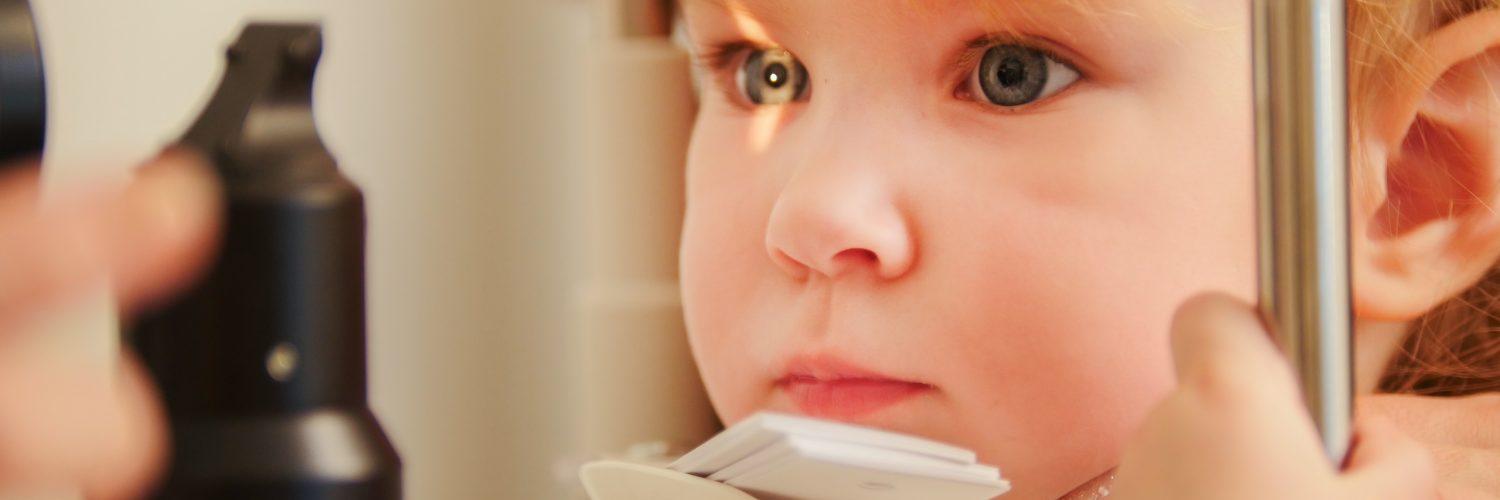We all want the best for our children and to help them get a good start in life, especially as they develop physically, socially and emotionally. They are continually learning and growing as they experience life and healthy eyes and good vision play a crucial role in that development. As a parent you may wonder how to monitor your child’s vision and when your child should have their eyes professionally checked.
How is my child’s vision monitored in early childhood?
From birth your child’s health is regularly monitored by your local child and family health nurse or GP. As part of this their vision is also checked to ensure their eye development is progressing well and there are no signs of any vision problems or eye disease. Some things they look out for are conditions such as lazy eye, crossed eyes or congenital cataracts. Early detection allows for early intervention so any problems can be managed promptly. As a parent, there are signs that you can look out for that may indicate your baby or toddler is having problems with their eyes:
- eyes moving quickly from side to side, or jerking randomly
- eyes not following your face or another object
- your child not making eye contact with you or others
- eyes not reacting to bright light
- pupils appearing white or cloudy
- eyes looking towards the nose or turning outwards
- eyes that don’t line up or move together.
There is also a visual assessment done at your child’s final health check-up at age 3½.
What about when my child reaches school age?
Some States and Territories in Australia have a free vision screening program for preschool children. However, Optometry Association Australia recommends that all children should have a full eye examination with an optometrist before they start school, with regular 2 to 3 yearly check-ups as they progress through primary and secondary school. It is particularly important if there is a family history of poor vision so that any eye problems can be detected and treated early.
How will I know if my child is experiencing vision problems?
It can be hard for a child to let you know if they are having problems because they may not realise that what they are seeing is not normal. Some things you might notice in your child:
- sore, tired, red or watery eyes
- frequent blinking, squinting or rubbing of their eyes
- tilting their head to one side or covering on eye to see better
- having trouble reading, such as losing their place or skipping and confusing words, or holding the book very close
- having trouble seeing the whiteboard clearly at school
- complaining of headaches, blurry or double vision
- reluctance to do things that require close-up vision, such as reading or homework, or activities such as sport where you need good distance vision
- sitting to close to the TV.
If you are concerned that your child is having difficulty with their vision, it is important that you arrange an eye examination with your optometrist.
What if I need to take my child to an optometrist when they are very young?
You may wonder how your child will be able to have their eyes tested if they are too young to speak or read an eye chart. There are tests your optometrist can do that do not require you child to be able respond back and tell you what they see.
- Babies. For babies they will use observational tests, such as testing the pupil’s response to light, checking your child’s ability to focus on an object and follow it with their eyes, and a Preferential Looking Test that involves using cards that are blank on one side and striped on the other to attract the child’s gaze. They may also use a retinoscope where a light is shone onto the retina, if they suspect your child has a refractive error that requires correction.
- Toddlers and pre-school children. A vision chart using LEA symbols will be used which shows shapes, such as a house, apple, square and circle, instead of letters. A retinoscopy test, as above, will also be done to see if you child needs glasses to see clearly, a randot stereopsis test will measure how well your child’s eyes work together to perceive depth, and, a cover/uncover test will be conducted to check the alignment of your child’s eyes. If you child needs glasses, it is usually to correct short-sightedness, long-sightedness or astigmatism.
Optometrists understand that having an eye test can be a scary experience for a young child, so they try to make the experience as child-friendly as possible. There are some optometrists that specialise in paediatric optometry and are used to undertaking the tests in a non-threatening environment and using toys and funny glasses to help your child to relax and enjoy the process.
If your child has a vision problem that inhibits their ability to see, it can have an impact on their educational achievements from such things as reading problems and difficulty in concentrating. Not only that, but it can also affect their social development. Not being able to participate in playground activities or sport because of eyesight difficulties can cause your child to feel left out or ostracised.
If you have any concerns about your child’s eyesight, it is important that you arrange an eye examination with your optometrist. Even if things appear to be going well, it is good to have an eye check to ensure your child’s vision is developing as it should be.




